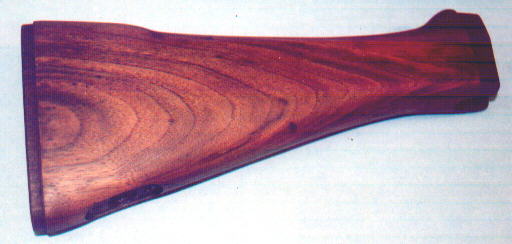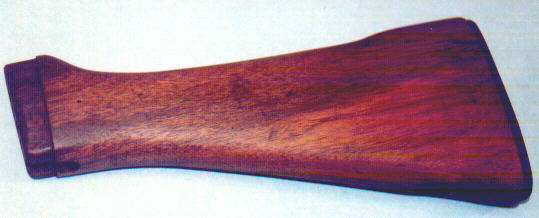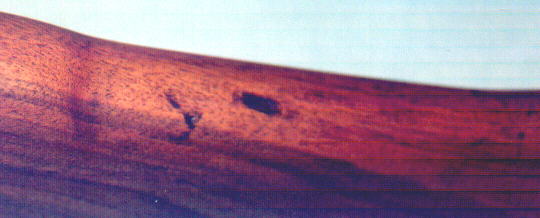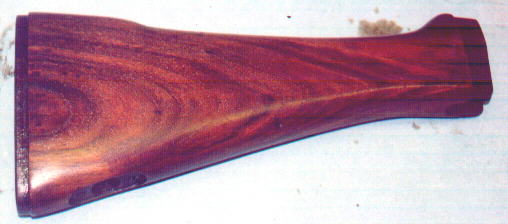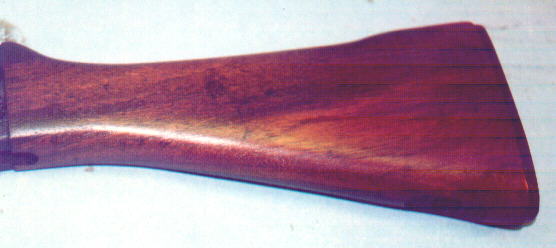

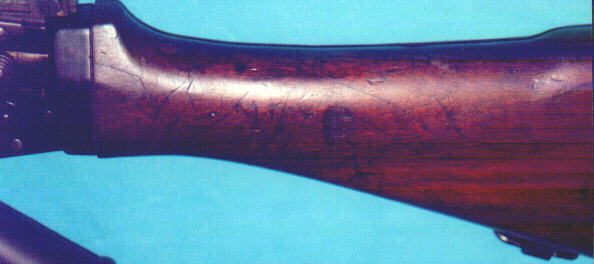
Prepare a stock pot with simmering water and dish washing soap or laundry detergent. I have long tanks on gas burners for this purpose, however you can make do with a plastic planter into which you have poured a solution of detergent and boiling water.
This serves two purposes. It draws out oil-based and water-based contaminants, and it swells the wood. This swelling will minimize dents. Be careful not to scald yourself. Gloves are useful. Aggressively scrubbing the wood with a toothbrush will help. Usually a half hour is enough. I put a heavy object in the pot to keep the stock submerged. For stocks slightly longer than the stock pot, simply invert half-way through.
Another technique is to spray down with Easy-Off or other oven cleaners. You can also wrap in paper towels after spraying down, or wrap in towels and a plastic wrap. The towels absorb the oils as they are drawn to the surface and the plastic wrap slows the solvent evaporation. You can also use flour to absorb the oil. Repeat at least twice, hosing off between applications. Your stock is now wet and probably very light in color - like a bleached gray. Dry the stock in a cool area for several days. Drying in the sun or force-drying by mechanical means may cause it to crack.
Another technique I have recently tried with success is to stick the wood in the dishwasher. Cascade detergent seems to work best. I know it sounds weird - thats what I though, too. But I tried it and it worked. Some stocks took two washings.
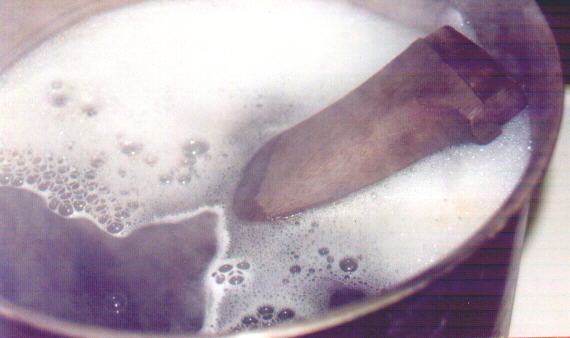
Another type of damage is a scratch. These are usually not deep, but may be long. Worse, they usually involve the wood grain being severed, which makes steaming of minimal value. For these, I recommend sanding perpendicular to the scratch without regard for the direction of the wood grain. Use 180 grit sandpaper with a hard backing. If completely removing the scratch will cause significant dimensional change in the stock, leave it alone. It will be minimized in subsequent steps.
The other kind of damage a call a gouge. There are two kinds of gouges. One is a dent where the grain has been severed, the other is when wood has been physically removed. I treat both the same. In my example, there is a significant gouge on the top of the stock. I opted to leave it alone. You will see from the finished product, that as a whole the gouge does not detract from the overall appearance. Your other option is to fill the gouge with Acraglass, or other wood fillers. Find a wood filler that you can dye before using. I have been unhappy with the Bondo-smelling fillers that claim to accept stain afterwards - they don't.
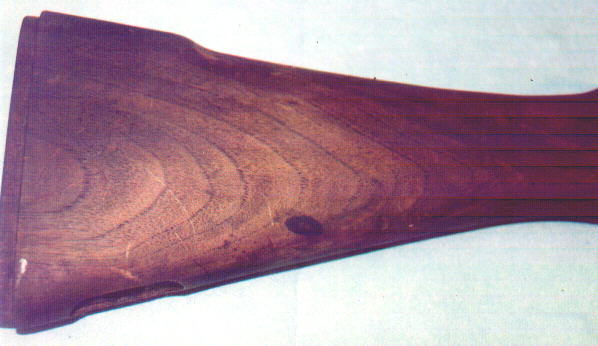
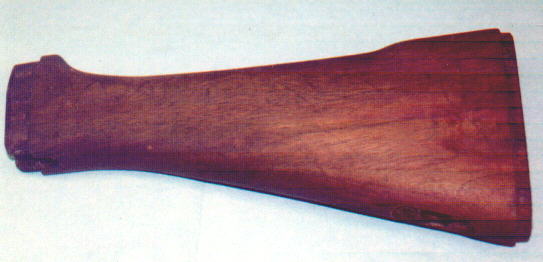
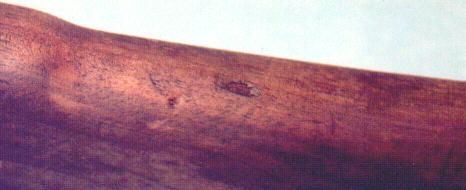
The stain color is largely a matter of personal preference. For walnut wood, I prefer the slight red tint of Miniwax "Special Walnut" or "Red Mahogany." On sap-wood, or wood with varying hardness, or light colored wood such as Italian Carcanos, and Israeli FALs, a dark stain will give poor results. It darkens the differing harnesses unevenly. In these cases, I recommend using Miniwax "natural" which will give a slight yellow/gold hue. You can use Tung Oil, Linseed Oil, or Tru-Oil. Tung Oil is thicker and gives a shinier finish. Linseed Oil takes longer to dry and gives a satin finish. Tru-Oil is my favorite. Japan Drier is an additive that accelerates the drying time of oil based finishes. Do not use with the light color woods as it will darken the color.
Mix equal parts of stain and oil in a small bow with a tablespoon or so of Japan Drier. Cut your sandpaper. Do not tear. Tearing will leave bits of abrasive material in your mixture that will imbed in the stock.
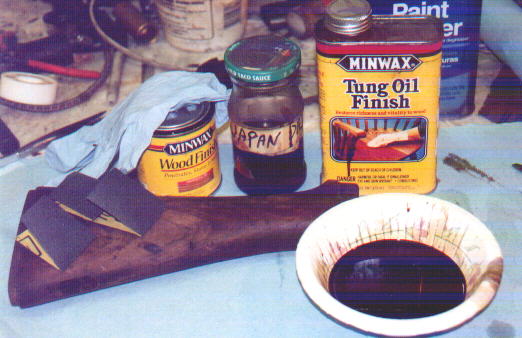
Start with 180 grit Dip the sandpaper into the stain and apply in circular motion, with enough pressure to work out remaining imperfections. This is the step where you will try to remove any last scratches and minimize any remaining dents and gouges. Take care and use a block if necessary around edges to keep from rounding them. Keep dipping into your stain to that you create a sticky slurry of oil stain and sanding dust. Do not remove the slurry. Start at one side of the stock and work methodically to the other The stain will highlight the fine circular scratches you are making - ignore them. They will disappear as you progress to finer grits. When you have completely covered the stock, let the slurry dry until it is tacky, but not yet hard, then wipe with a lint-free cloth. I use blue paper shop-towels. White paper towels shed.
Repeat with 220. This time only apply enough pressure to feel the sandpaper cutting,, discarding the paper when the cutting action diminishes. Do the stock two times with 220 grit. You may still see extremely fine sanding marks with close examination, but this finish is already finer than most commercial "finished" stocks, and the pores are partially filled which gives for a much smoother appearance. Wipe down and repeat with 320. That is usually sufficient. I like to do a final sanding with 400 grit and if its a really nice piece of wood, a final time with 600 grit.
